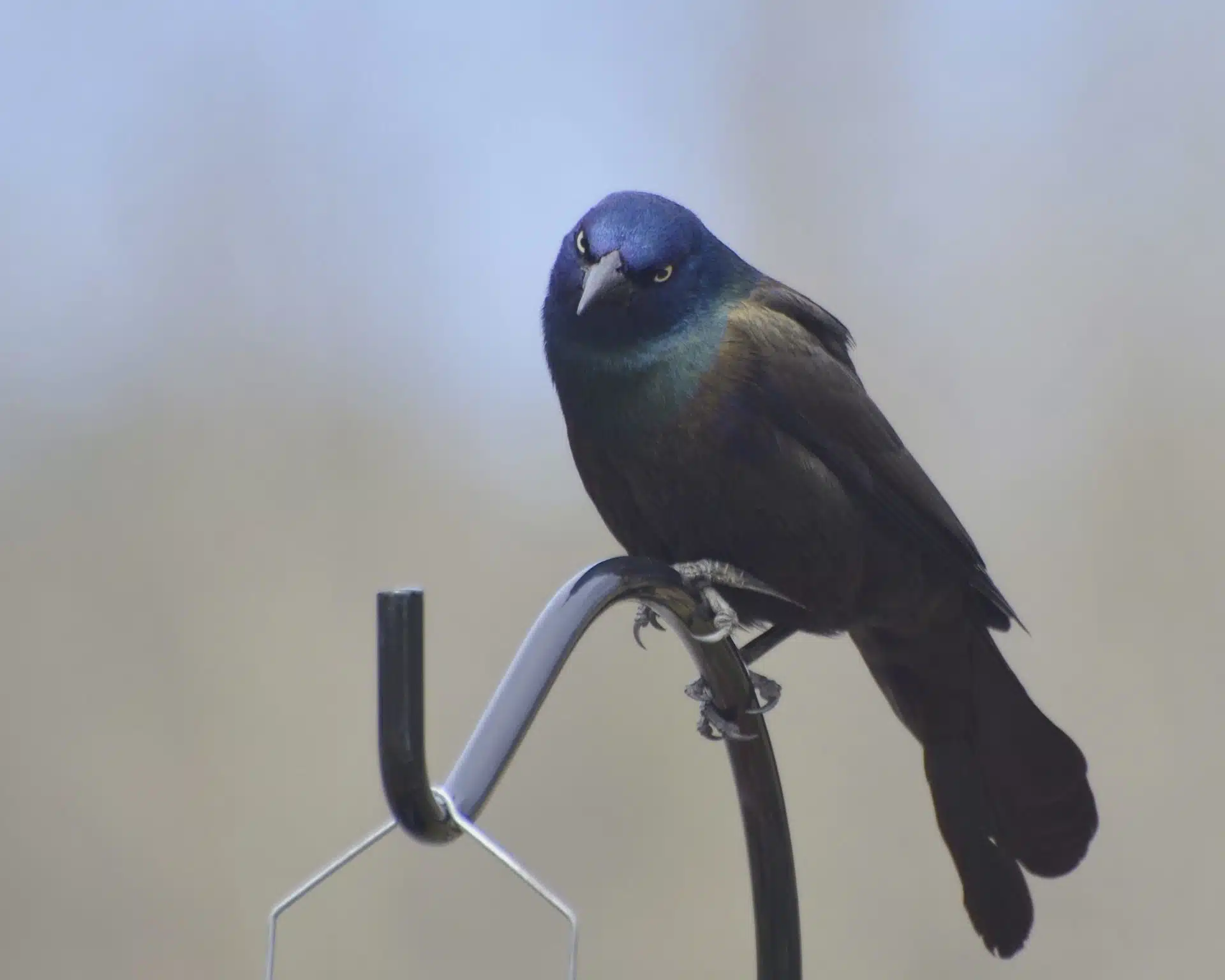Nature Profile
Birds
Common Grackle
Quiscalus quiscula

Voice: variety of squeaks, whistles, and croaks; harsh notes ending in a metallic squeak
During the summer, a handful of common grackles can be found in open woodlands, along the forest edge and in grassland, meadows, swamps and marshes. They are also very common in human landscapes, including agricultural fields and feedlots, suburbs, city parks and cemeteries. During fall migration, the numbers of birds increase dramatically. It’s not uncommon to see hundreds of grackles and other blackbirds moving through habitats squawking and looking of food.
Common grackles typically forage on the ground. Their primary food source is agricultural grains; however they will eat other seeds including acorns. They have a keel, a sharp hard ridge, on the inside of the upper beak that they use for sawing open acorns. Usually they score the outside of the narrow end then bite the acorn open. Besides seeds, 25 percent or more of a grackle’s summer diet include animals, such insects, spiders, crustaceans, mollusks, fish, amphibians, mice and other birds. In winter, common grackles forage and roost in large flocks with several different species of blackbird. These flocks can number in the millions of individuals.
Common grackles are one of 250 species of birds that try to rid themselves of parasites by anting. They arch their bodies over on the ground with their wings spread to allow ants crawl over them. The ants sting the birds and secrete formic acid onto the birds’ bodies and feathers. The formic acid aids in ridding the bird of parasites. In addition to ants, grackles have been observed using walnut juice, lemons, limes, marigold blossoms, chokecherries and mothballs in a similar way.
In the spring common grackle females choose a nest site near water. After building the first nest females often seem to change their minds and select a different nest site. Nests can be high in coniferous trees, low in shrubs, on dry land and in marshes or tall swamp vegetation. The nest can take up to six weeks to finish. The bulky cupped nest can be made of twig, leaves and grasses along with bits of paper, string, cloth and corn husks. Females reinforce the nest with mud and line it with fine grasses or horse hair. The finished nest is 6-9 inches across.
Best Location to View: Blueberry Pond, Buttonbush Bog, Corning Lake
Color: Purple
Range: North America
Size: Medium
Wingspan: Medium




